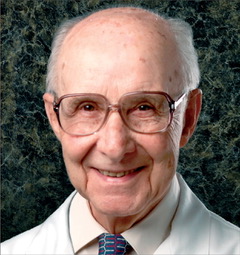Dr. Ignacio Ponseti
About his life and work

Ignacio Ponseti was born on June 3, 1914, in Menorca, Spain. In his early years, he showed an interest in his father’s work as a watchmaker. The precision work and attention to detail, according to some, contributed to his later life’s work. Ponseti studied medicine in Barcelona. Shortly after his graduation, the Spanish Civil War (1936-1939) broke out. During those years, he treated thousands of bone fractures and became highly skilled in realigning and manipulating with plaster. After this period, Ponseti went to Mexico for two years and then emigrated in 1941 to his final destination: Iowa, where he was affiliated with the University of Iowa and specialized in orthopedics, with a special interest in clubfoot.
Ponseti’s Groundbreaking Clubfoot Studies
Ponseti studied clubfeet in various ways: in patients treated surgically, as well as in untreated clubfeet and clubfoot deformities in fetuses and stillborns. On the one hand, he concluded that the surgical method causes much damage to tissues, often leading to unsatisfactory results. On the other hand, his anatomical studies reinforced his idea that the elasticity of young children’s tissues is the key to a different form of treatment. This, combined with his extensive knowledge of the interdependence of the moving tarsal bones, led to the method we now know.
Ponseti was neglected for 30 years
From as early as the 1960s, Ponseti published his results, but they did not yet gain traction in the medical world. Ponseti continued his work in Iowa and from the 1990s the method received increasing attention. (Parents of) patients also played a crucial role in the worldwide spreading and acceptance of the method. Nowadays, the method is worldwide recognized as the golden standard for clubfoot treatment and offers a cost-effective and painless perspective for an ever-growing group of patients.
Dr. Ponseti’s Patient-Centered Legacy
In addition to his scientific achievements, Dr. Ponseti was known for his kind, patient-centered approach to medicine. He treated thousands of children with clubfoot, profoundly impacting their lives. Ponseti remained involved in research, development, and training of the method until shortly before his death on October 18, 2009.
Honoring Dr. Ponseti’s Inspiring Legacy
His work remains a source of inspiration for orthopedic professionals and families worldwide. Join us in honoring his legacy by further increasing the knowledge and availability of the Ponseti method for clubfoot treatment. Together, we can make a difference!
